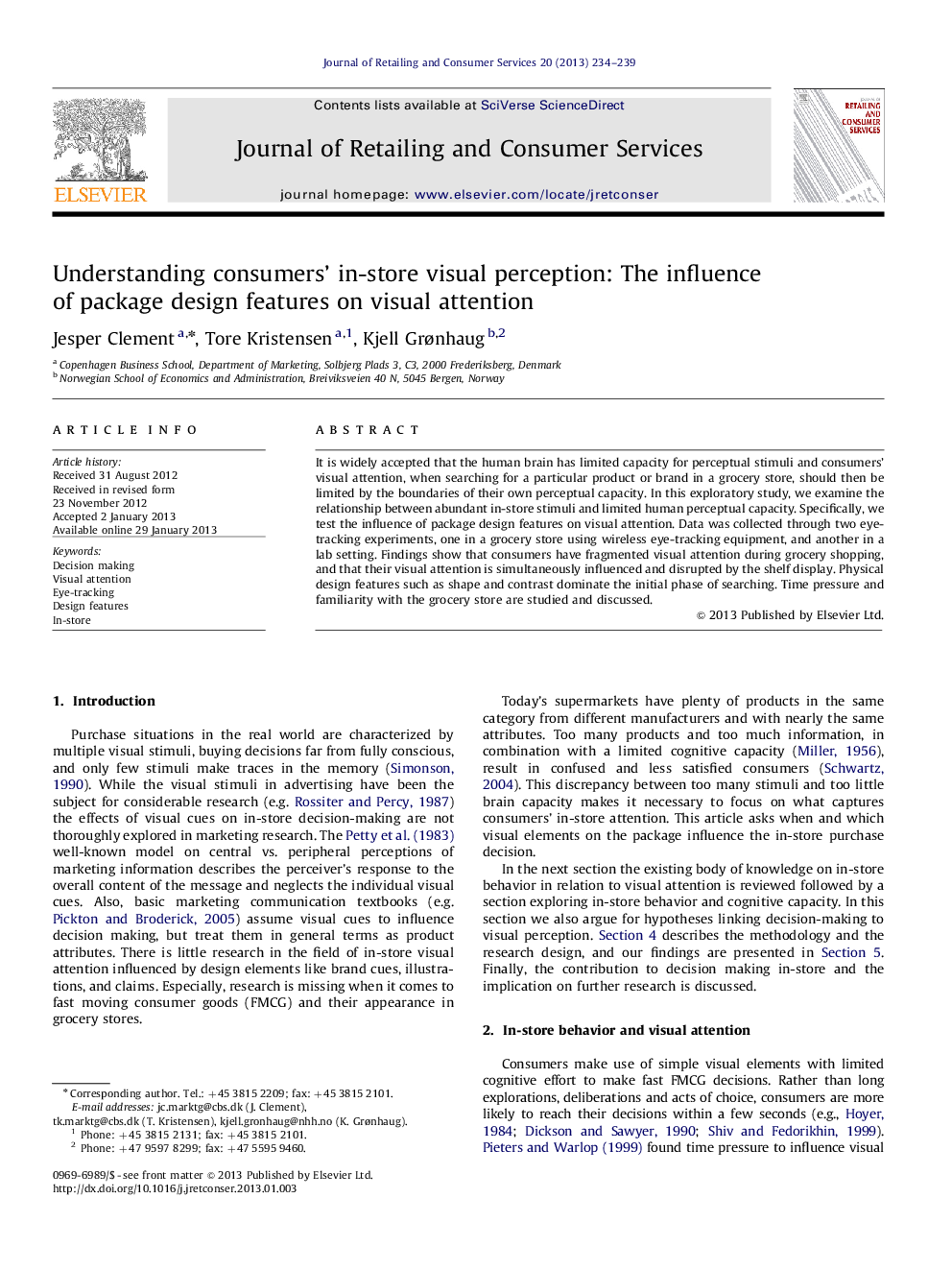| Article ID | Journal | Published Year | Pages | File Type |
|---|---|---|---|---|
| 1029133 | Journal of Retailing and Consumer Services | 2013 | 6 Pages |
It is widely accepted that the human brain has limited capacity for perceptual stimuli and consumers' visual attention, when searching for a particular product or brand in a grocery store, should then be limited by the boundaries of their own perceptual capacity. In this exploratory study, we examine the relationship between abundant in-store stimuli and limited human perceptual capacity. Specifically, we test the influence of package design features on visual attention. Data was collected through two eye-tracking experiments, one in a grocery store using wireless eye-tracking equipment, and another in a lab setting. Findings show that consumers have fragmented visual attention during grocery shopping, and that their visual attention is simultaneously influenced and disrupted by the shelf display. Physical design features such as shape and contrast dominate the initial phase of searching. Time pressure and familiarity with the grocery store are studied and discussed.
► Our findings on consumers' visual search influenced by particular design features on the product packaging bring new knowledge to the actual decision making in-store. ► Previous decision models building on the assumption of a rational consumer with a set of pre-existing criteria are challenged.
